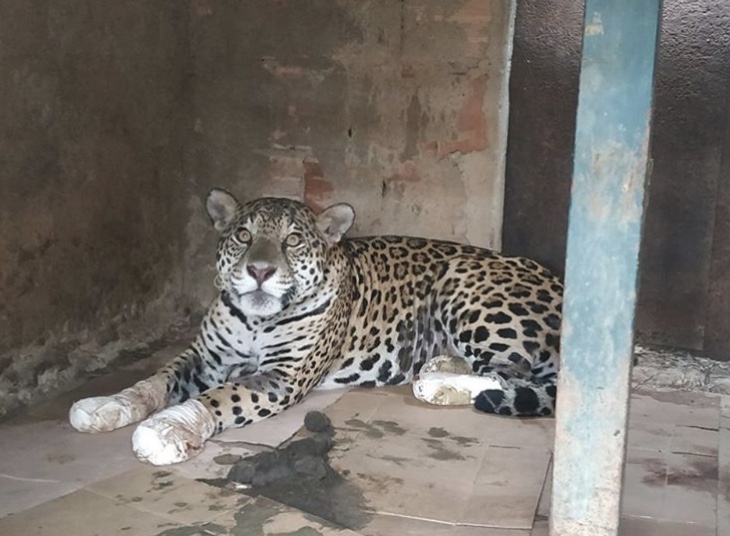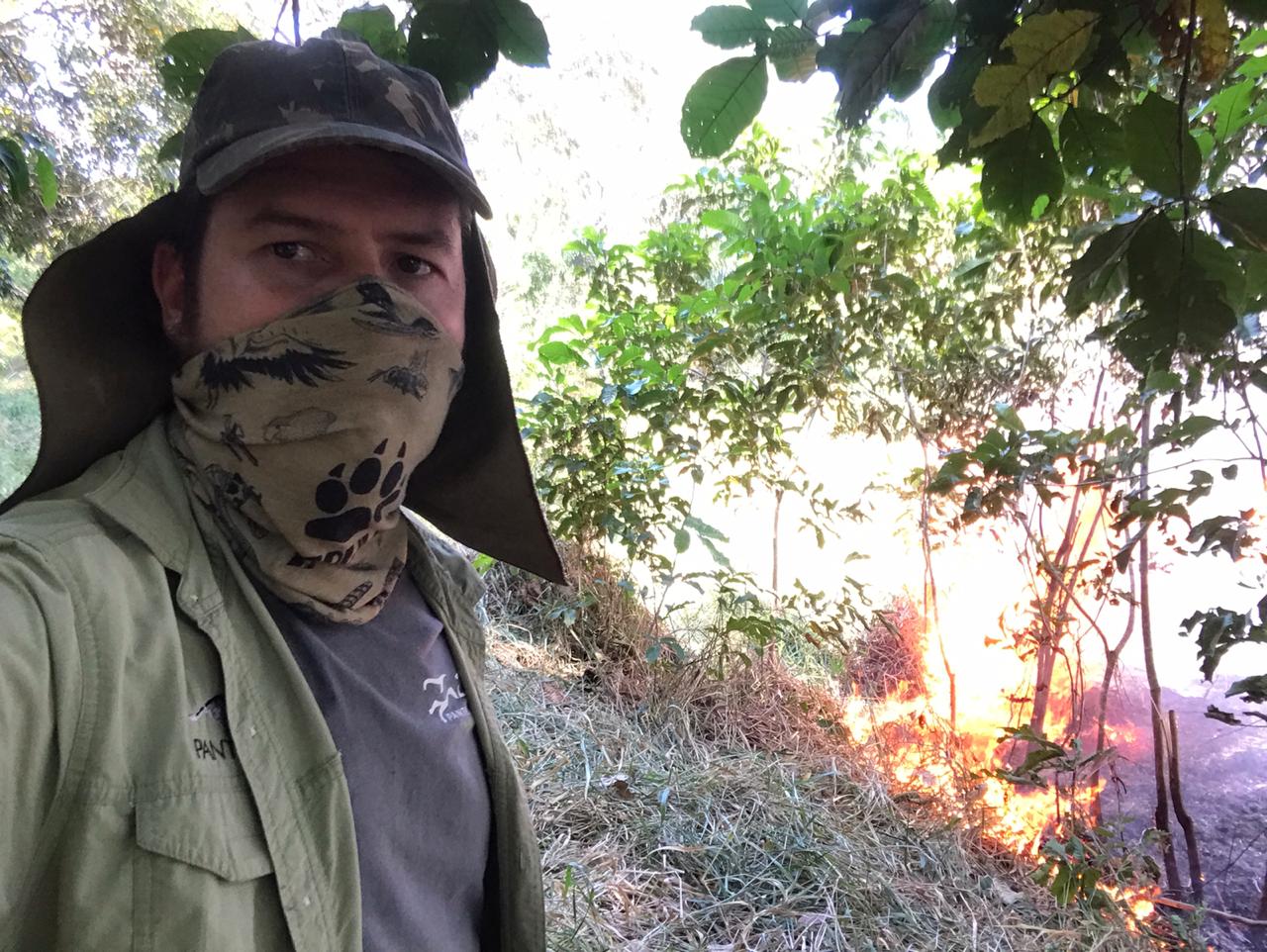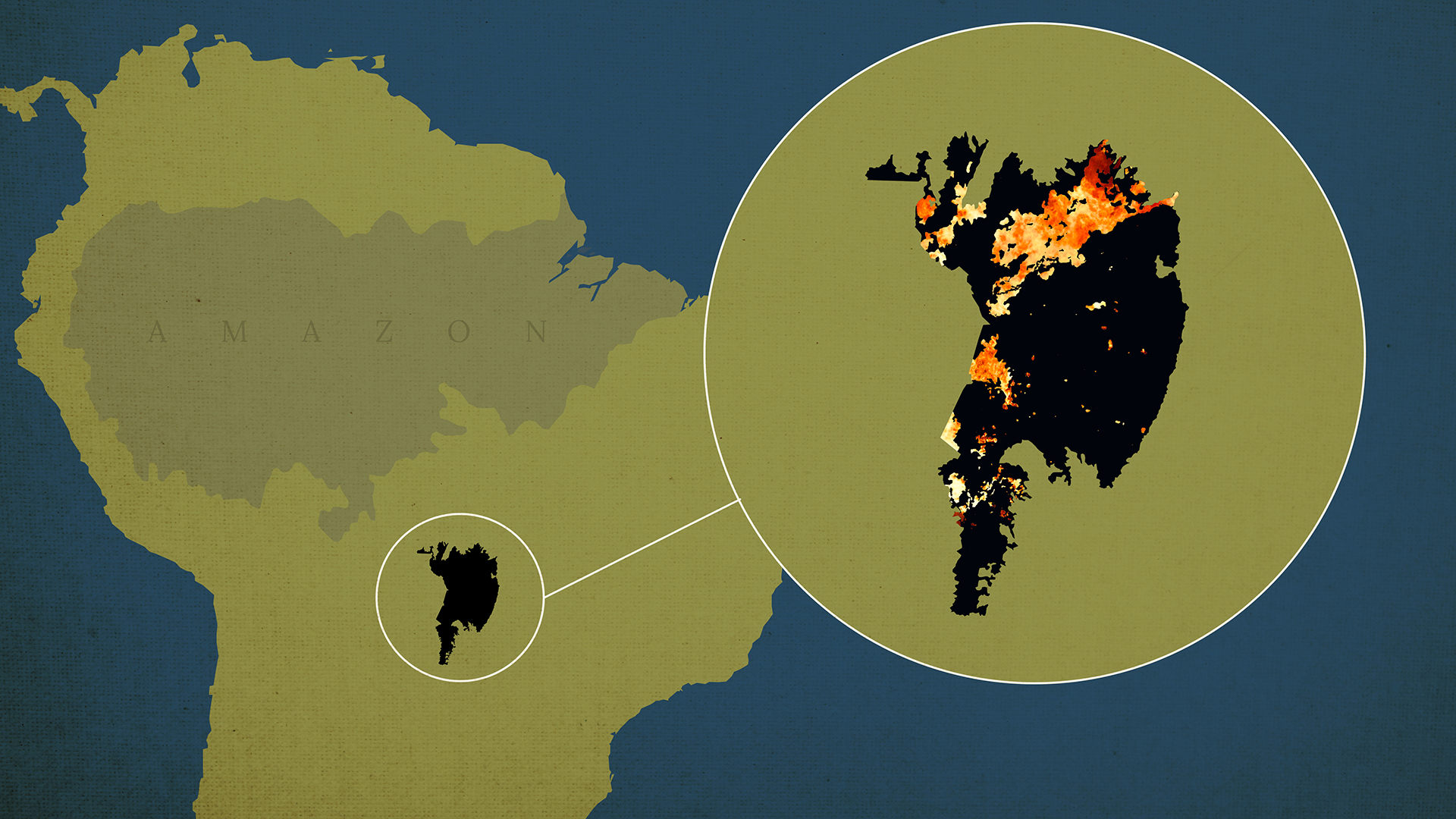It’s time to wake up. On Global Day of Climate Action, VICE Media Group is solely telling stories about our current climate crisis. Click here to meet young climate leaders from around the globe and learn how you can take action.
RIO DE JANEIRO, Brazil - Fernando Tortato arrived in late July, hoping to get started on his regular monitoring work on jaguars in the Pantanal, an area of wetlands in Brazil that is the size of England. As he began to understand the scale of the disaster unfolding around him, he dropped his research and instead turned to fighting the wildfires.
“You’re always at the whim of the fire,” said Tortato, who works for Panthera, a global wild cat conservation organization. “Sometimes it’s light and you have time to manage it, to propose a strategy. But often the fire comes with wind and you have to flee.”
Over the next 40 days, he would fight a losing battle against the worst fires in the area’s history.
Located just south of the Amazon, stretching into Bolivia and Paraguay, the Pantanal has seen months of unprecedented blazes. Experts fear the sheer size of the destruction wrought on one of the world’s highest concentrations of rare species.
From January through September 24, more than 16,000 blazes have ravaged the area, the highest number for any year on record going back to 1999 according to Brazil’s INPE space agency. The fires have engulfed more than 22% of the entire area, according to data from the Federal University of Rio de Janeiro’s Meteorology Department. The nearby Paraguay River, known for overflowing its banks and slowly flooding the region over the Pantanal’s wet season, sits at its lowest level since the 1960s.
Key areas of the Pantanal are home to 15% of the world’s hyacinth macaw population, such as the São Francisco de Perigara Ranch. The Encontro das Águas (Meeting of the Waters) Park, is where the highest concentration of human-accustomed jaguars live. Both have almost completely burned to the ground.

São Francisco and Meeting of the Waters have seen 85% and 92% of their territory engulfed in flames over the last month and a half, respectively, according to satellite data analyzed by the Centro de Vida Institute, an NGO.
In addition to wildlife, the unrelenting blazes threaten a uniquely balanced ecosystem of environmental groups, tourism workers, and ranchers. In contrast to the Amazon, the area’s open landscape and abundance of animals allow for up-close wildlife observation, and ranchers have been around for centuries.
Tortato said that while the balance is imperfect, the Pantanal “allows for economic activity to take place without altering the landscape.”

He cautioned away from making comparisons to the Amazon, where cattle ranching is a key driver of deforestation. “People see an ox in the Pantanal and say ‘oh that’s a problem.’ No, it’s not, because he has been here for more than 200 years. If it is well managed and the property owner is respectful, this coexistence is plausible.”
With this year’s devastation, he added, “nobody wins.”
Neiva Guedes, president of the Arara Azul Institute, an environmental conservation NGO, noted that within the São Francisco de Perigara ranch, the hyacinth macaw often relies on local cattle, feeding on bits of fruit the mammals leave behind.
For Guedes, preventing uncontrollable wildfires in the future would require specific federal legislation and conservation efforts. “I don't think that it’s by fighting with rural producers that we’re going to succeed in preserving this environment,” said Guedes, who has studied wildlife in the area for more than thirty years. “We need to reconcile.”
The tourism industry too has been hard hit, said Guedes, who is now beginning a full evaluation of the damage done to the area’s macaw population. “This fire comes just as we’re beginning to reopen, and burns everything down. What are we going to show to the tourists? Tree trunks? Charcoal?”
Tourism has been “practically paralyzed by COVID-19 and then worsened with the fires,” said Akhila and Andre Thuronyi in an email. Experts in Pantanal ecotourism and owners of the Araras Ecolodge inn, they spent 55 days fighting to keep fires out of their reserve.
The nearby RPPN Sesc Pantanal nature reserve, the largest privately held reserve in Brazil, lost an estimated 70% of its territory to the flames. Cristina Cuiabália, the reserve’s manager, called for unity between the area's different groups, acknowledging that the use of fire for land management is a longstanding practice in the region, often employed among indigenous peoples and small producers for slash-and-burn agriculture and pasturing. “But its use needs to be rational and controlled, managed with technical support from the responsible state organs,” said the biologist.
“We know exactly where these fires started,” she added.
A non-profit environmental group called Centro de Vida Institute traced the origins of the nine main blazes in the state of Mato Grosso. It found that the origin of five lay on registered private estates, according to Vinicius Silgueiro, territorial intelligence coordinator at the group, who said: “The monitoring that we did, the environmental [government] agencies have the capacity to do, because they have the same inputs of satellite images and data. They need to monitor this and hold people responsible.”
Days after Silgueiro spoke with VICE News, Brazil's federal police used satellite imagery to launch an investigation into criminal wrongdoing into fires set in the Mato Grosso do Sul portion of the Pantanal. Silgueiro called the operation "very important," adding he hoped the police would do the same in Mato Grosso.
The team of volunteer firefighters from local hotels, nature reserves and NGOs that have fought the flames since July also received assistance from the government more recently. More than 350 officials - a combination of members of the armed forces, firefighters and the National Guard - have been sent to tackle the fires. The joint force is now holding out for the rainy season, set to begin by the end of September.
But the damage has already been done. As Tortato remarked, 2020 has not been a normal year. “The fire kept overcoming our efforts. We were able to protect a lot of the [Panthera] ranch, but not as much as we would have liked to.”
“In the majority of our battles with the fire, the fire won.”
Cover: A firefighter of the Mato Grosso State Department combats a wildfire in the Porto Jofre region of the Pantanal, near the Transpantaneira park road which crosses the world's largest tropical wetland, in Mato Grosso State, Brazil, on September 14, 2020. Credit: MAURO PIMENTEL/AFP via Getty Images.
from VICE US https://ift.tt/3i2nDEd
via cheap web hosting


No comments:
Post a Comment